Essential Hot Tub Shocking Tips for Crystal-Clear Water
March 19th, 2024
March 19th, 2024
As the sun dips below the horizon, casting gentle hues across the garden, your hot tub stands invitingly, promising relaxation and serenity. Yet, the tranquility of your bubbling oasis depends not just on its inviting warmth, but on the clarity and cleanliness of the water. It’s a delicate balance that can be disrupted by the very elements that make hot tubbing delightful—frequent use, varying temperatures, and a mix of bathers. Maintaining this balance calls for regular attention, and one crucial aspect of this care routine is the process known as "shocking" your hot tub.
Now, shocking isn’t as dramatic as it sounds. It's a method that refreshes your water, clears impurities, and ensures a safe soak every time. In my own backyard adventures, I’ve learned that getting the shock treatment right not only preserves the life of your hot tub but also enhances the whole experience. Missteps, like over or under-shocking, can lead to murky water or skin irritations, turning relaxation into frustration.
Through trial, error, and a little guidance, I've mastered the art, and it's simpler than you might think. This guide, complete with an easy-to-follow video, will walk you through the steps to achieve crystal-clear water, letting you savor those blissful moments in your hot tub without a hitch.
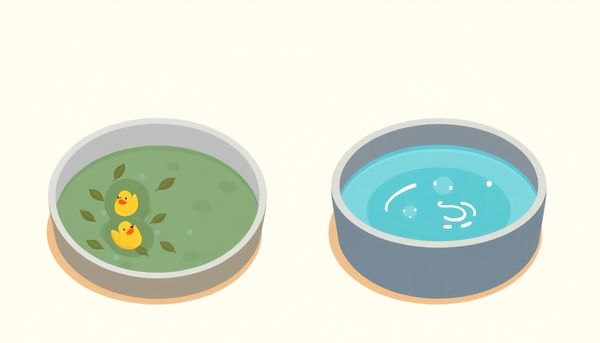
Selecting the ideal shock treatment for your hot tub can make the difference between a relaxing soak and a less-than-inviting dip. The choice primarily hinges on your tub's current condition and its usage frequency. For those who enjoy frequent soaks, non-chlorine shock is the go-to for regular maintenance. It revitalizes existing sanitizers without adding excess chlorine, allowing for quicker re-entry into the tub. My buddy swears by this method, especially after weekend gatherings, as it effectively clears out lotions and skin oils left behind.
Alternatively, chlorine shock is the heavy hitter for tackling more significant issues. If your hot tub has seen a spike in usage or is struggling with cloudiness, this option is your ally. It's potent, breaking down stubborn contaminants and even combating algae. However, patience is key—waiting for chlorine levels to normalize is essential before hopping back in. This approach has rescued my own hot tub after a particularly lively family reunion, restoring its clarity almost overnight.
Understanding the specific needs of your hot tub will guide you in choosing the appropriate shock. Consider your tub's regular visitors and usage patterns. A well-informed decision keeps the water pristine, ensuring each soak is as refreshing as the first.
Determining how often to shock your hot tub can feel like navigating a maze, but understanding your usage pattern is a compass that guides you to clear waters. If your hot tub sees frequent gatherings or post-gym relaxation sessions, you might need to add shock more often than the typical weekly routine. A friend of mine, who regularly hosts weekend spa parties, swears by shocking her hot tub after each event to maintain pristine conditions. This ensures that all the leftover oils, lotions, and other contaminants from multiple users are effectively neutralized.
On the other hand, a solo bather who enjoys a quiet soak a couple of times a week might find that a weekly shock is sufficient. However, always consider the unexpected, like a sudden cloudiness or a drop in sanitizer effectiveness. In such cases, increasing the frequency of shock can act as a quick remedy. Non-chlorine shock is perfect for regular maintenance, allowing you to hop back in shortly after treatment. Meanwhile, chlorine shock, with its potent bacteria-busting powers, might require a longer wait but proves invaluable after heavy use or unexpected contaminants.
Testing your water regularly, at least once a week, helps you monitor sanitizer levels, pH, and alkalinity. This ensures not only the health of your hot tub but also the enjoyment of your next soak. With a little attention and routine, your hot tub can remain a haven of relaxation and cleanliness.
Choosing the right shock for your hot tub isn't merely about adding chemicals; it's about understanding the unique needs of your spa water. Each type of shock serves a distinct purpose, and knowing which to employ can make the difference between a clear soak and a murky mess. Consider your hot tub's bather load and usage frequency. If your spa sees a lot of action, a chlorine shock might be your best ally. This type not only tackles bacteria and algae but also clears up cloudy water, making it ideal for post-party cleanups or when your hot tub seems more like a communal bath.
For regular upkeep or if your hot tub is a personal oasis seldom frequented, non-chlorine shock is often the better choice. It works quietly in the background, revitalizing existing sanitizers without the need for downtime. You're free to enjoy your hot tub shortly after treatment, making it perfect for those spontaneous spa moments. Personally, I've found non-chlorine shock invaluable after a long soak, especially when friends drop by unexpectedly. It keeps my water fresh and invites ready.
No matter which type you choose, always remember: balance your water’s pH and alkalinity first. A well-adjusted pH maximizes shock effectiveness, ensuring you get the most from your treatment. Tailor your approach based on your hot tub’s demands, and you'll maintain pristine water with ease.
Achieving the perfect balance in water chemistry is akin to orchestrating a harmonious melody. It's a subtle dance between various elements, each crucial to maintaining the clarity and health of your hot tub. Unlike casually tossing in a pinch of seasoning to a pot, proper hot tub care requires precision and regular adjustment to ensure the water remains clean and inviting.
Start by focusing on the fundamental pillars: pH, alkalinity, and sanitizer levels. These three play pivotal roles in determining how well your shock treatments perform. Think of pH as the water's personality; it should hover between 7.4 and 7.6 for optimal comfort and effectiveness. Alkalinity acts as a buffer, keeping pH swings in check. A range of 100 to 150 PPM provides stability, while also allowing for some flexibility.
Every week, dedicate a few minutes to testing these levels. A personal anecdote: I once neglected this routine, and my once-crystal-clear waters turned cloudy. A quick test revealed imbalanced pH and alkalinity, which were hindering the effectiveness of my chlorine shock. After a swift correction, the water returned to its pristine state within hours.
Utilizing a test kit, adjust your chemical levels as necessary before shocking. This ensures the sanitizer can do its job efficiently, preventing pesky issues like algae formation or that unwelcome chlorine odor. By respecting this balance, your hot tub will remain a serene oasis, ready for soothing soaks anytime.

In the quest for pristine hot tub water, balancing pH is more than just a technical step—it's a pivotal practice. I once underestimated this phase during a particularly busy week. Eager to enjoy my hot tub, I skipped checking my pH levels, thinking the shock treatment would handle it all. Big mistake. The water didn't clear up as expected, and I learned firsthand how crucial it is to get those numbers right.
A balanced pH ensures that the shock treatment can perform at its best. When the pH strays too far from the ideal range of 7.4 to 7.6, the effectiveness of both chlorine and non-chlorine shocks diminishes. An imbalanced pH can lead to cloudiness and inefficient sanitization. To achieve that perfect balance, testing your water with a reliable test kit is essential. It might sound tedious, but it saves time and hassle in the long run.
Consider your pH level as the stage manager of your hot tub’s chemistry. When set correctly, every other element performs seamlessly. If you're finding your pH levels slightly off, adjust them with pH increasers or decreasers as needed. Remember, this tiny tweak can be the difference between a clear soak and a murky dip. Embrace the routine of testing and balancing your pH weekly; your hot tub will reward you with crystal-clear waters ready for relaxation.
#
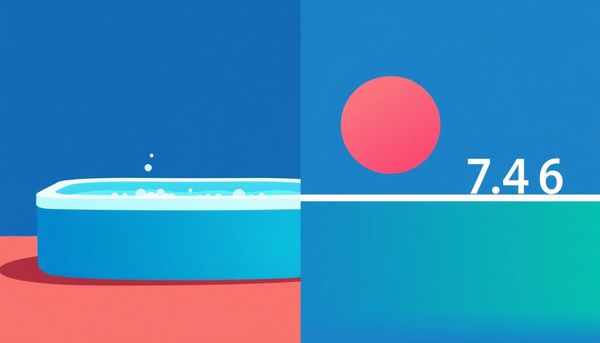
Selecting the appropriate shock type for your hot tub is more art than science, blending an understanding of your spa’s unique needs with the chemistry of water maintenance. It's akin to choosing the right tool for a job—each option has its strengths, and knowing when to use them makes all the difference.
For those who find themselves soaking frequently, or with a bustling household enjoying the tub, non-chlorine shock becomes your best ally. This type of shock, often referred to as an oxidizer, works wonders for routine upkeep. It revitalizes existing chlorine or bromine in your tub, allowing it to combat contaminants effectively. A friend of mine swears by adding a quick dose after each soak, keeping her water pristine without the downtime associated with chlorine shock.
On the other hand, if your hot tub occasionally resembles a science experiment gone awry—cloudy water or an unmistakable chlorine scent—it might be time to call in the big guns: chlorine shock. This potent mix tackles more significant issues, eliminating bacteria and algae, and clearing up murky water. Be mindful, though; its strength means waiting for chlorine levels to lower before diving back in.
Balancing these two types of shock ensures your hot tub remains an inviting oasis. It’s about responding to your tub’s cues and maintaining a schedule that aligns with your usage. Whether you're seeking regular maintenance or tackling tougher problems, choosing the right shock type is a crucial step in keeping your hot tub a perfect retreat.
Balancing pH and alkalinity is a crucial step in preparing your hot tub for the shock treatment. These factors directly influence the effectiveness of your sanitizers, whether it's chlorine or bromine. pH levels should ideally rest between 7.4 and 7.6, ensuring water comfort—neither irritating to the skin nor damaging to the tub's components. A relative once told me about their hot tub's pH being too high, leading to itchy skin and cloudy water. Adjusting the pH made all the difference, showcasing how vital these checks are.
Meanwhile, alkalinity acts as a buffer for pH, stabilizing it to prevent severe fluctuations. The sweet spot for alkalinity typically lies between 100 and 150 PPM. Think of it as the unsung hero that keeps your hot tub chemistry in harmony. I've found that regularly testing these levels with a reliable kit simplifies the process, ensuring that when you do add shock, it performs its magic efficiently.
Failing to optimize these levels before shocking can render your efforts less effective, akin to firing blanks. By keeping a balanced foundation, your chemicals work better, prolonging their life and reducing the need for frequent adjustments. Just like tuning a musical instrument, once everything is in sync, the results are clear, sparkling water that feels as good as it looks.
Every week, your hot tub eagerly awaits its rejuvenation, not unlike a tired soul yearning for a restful break. Implementing a weekly shock routine isn’t just a task on your to-do list; it’s a spa ritual that breathes life back into your water, ensuring every soak is as refreshing as the last. As you gather your tools—a trusty pair of gloves, a measuring cup, and the right type of shock—you’re not merely prepping chemicals; you’re setting the stage for water magic.
Your hot tub, after a week of diligent bubbling, needs a good cleanse. Whether you’ve indulged daily or just once in a while, the accumulation of oils, sweat, and other organic materials necessitates a reset. Opt for a non-chlorine shock for routine maintenance, particularly if your hot tub usage is frequent. This mild manner of shock revives existing sanitizers without whisking you away from the tub for long. On busier weeks, or when unexpected guests plunge into your spa, consider a more robust chlorine shock to tackle heightened contaminants.
Balancing your approach based on tub usage and water conditions is key. On a less frequent week, a single non-chlorine shock treatment may suffice. Yet, remember to keep an eye on the pH and alkalinity—these aspects ensure your chosen shock works its wonders efficiently. This mindful maintenance enriches your hot tub experience, making sure each session is as pristine and inviting as a mountain spring.
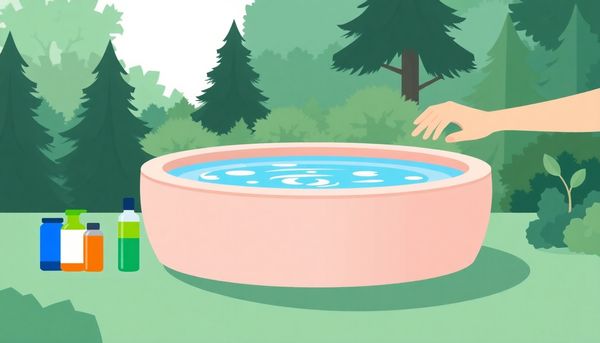
When preparing to shock your hot tub, safety should be your top priority. Before you even think about handling chemicals, gear up with protective equipment. A pair of sturdy gloves and safety goggles aren’t just accessories; they're essential. And don't forget to wear long sleeves and pants to prevent any accidental splashes from reaching your skin. Remember that safety precautions don't stop with what you wear—consider your environment, too. On windy days, avoid adding shock to prevent the powder from drifting back into your face.
Accurate measurement of the shock is a crucial step that often gets overlooked. Rather than relying on guesswork, use a measuring cup or tablespoon to ensure precision based on your hot tub’s size. Overdosing can cause more harm than good, leading to imbalanced water chemistry and unnecessary skin irritation for bathers. For a typical 300-gallon hot tub, you’ll generally need between 1 to 2 ounces of shock. Always follow the manufacturer’s instructions closely to avoid errors.
Once you’ve added the shock, it’s important to maintain proper ventilation. Leave the hot tub uncovered for at least 20 minutes to let the chemicals off-gas effectively. Keep the water circulating with the jets on low and air valves off, ensuring the shock disperses evenly without escaping too quickly into the air. This careful approach not only maximizes the effectiveness of the shock but also keeps you and your hot tub in safe operating condition.
Approaching the task of shocking your hot tub might initially feel daunting, but with the right steps, you'll turn it into a simple routine. On a calm evening, after a long day, there's nothing quite like soaking in crystal-clear water, free from unwanted odors or cloudiness. This clarity is achieved by regularly introducing a shock treatment, a concentrated dose of either chlorine or non-chlorine oxidizer, which revitalizes your water by breaking down contaminants.
Begin by determining the right type of shock for your needs. If your hot tub sees frequent use—think family gatherings or weekend parties—a chlorine shock might be necessary to tackle bacteria and organic matter head-on. However, for regular maintenance, non-chlorine shock serves as an excellent partner, keeping your sanitizer levels optimal without the need to wait long before your next soak.
Before adding shock, check your hot tub's pH and alkalinity. These levels are key players in ensuring that the shock does its job effectively. Once balanced, measure the shock carefully. It’s easy to overdo it, but generally, one to two ounces is enough for a 300-gallon tub. Let the water circulate with the air valves off, and the jets on low, so the chemical can disperse thoroughly without off-gassing too quickly. Leave the cover off for at least 20 minutes, and enjoy the peace of knowing your next dip will be as refreshing as the last.
Choosing the right shock type for your hot tub can feel like deciding between two equally delicious desserts at a fancy restaurant. Each has its own flavor and purpose, and knowing which will best suit your needs can make all the difference in your soaking experience.
Chlorine shock is the robust option, like a rich chocolate cake, that's perfect for tackling stubborn issues such as bacteria, algae, or cloudy water. If your spa is bustling with activity, or you’ve just hosted a lively tub party, chlorine shock is your go-to. It not only gets rid of unwanted contaminants but also breaks down combined chlorine, those pesky chloramines responsible for that strong chlorine smell. However, remember that patience is key—wait until chlorine levels stabilize before taking a dip.
Alternatively, non-chlorine shock acts like a refreshing sorbet, keeping your hot tub fresh without overpowering. It's an oxidizer that revitalizes existing chlorine or bromine by breaking apart combined molecules, thus enhancing your sanitizer’s ability to do its job. This type of shock is ideal for regular maintenance, easily fitting into your routine without requiring downtime. Use it weekly or after each soak, especially in mineral or saltwater systems, to keep your water crystal clear and inviting.
Ultimately, the choice between chlorine and non-chlorine shock depends on your hot tub's needs and usage patterns. Understanding these nuances ensures your tub remains a sanctuary of relaxation, free from the burden of contaminants.
Chemicals may play the starring role in keeping your hot tub pristine, but how you handle them is just as crucial. Picture yourself standing at the edge of your hot tub, excited to dive into maintenance mode. Before you begin, it's important to gear up properly. Gloves and safety goggles are more than just accessories—they're your first line of defense against chemical splashes. Long sleeves and pants protect your skin, while closed-toe shoes are essential to guard against any stray granules.
Wind can be a mischievous element, turning an ordinary task into a headache by sending powdery shock flying. A calm day or sheltered spot can make all the difference. Measuring is another critical step. Avoid the temptation to eyeball it; precision is your friend here. A measuring cup or tablespoon will prevent overdosing, which can lead to irritation and unnecessary chemical buildup.
Remember, patience pays off. After adding the shock, leave your hot tub uncovered for at least 20 minutes. This allows the chemicals to disperse effectively. Keep the circulation pump on, but with air valves turned off, to ensure the shock mixes thoroughly. Following these steps not only safeguards your health but also ensures that your hot tub treatment works as intended. So, prioritize safety, and the rest will fall into place, leaving you with sparkling clean water ready for relaxation.

Imagine you're settling into a warm, bubbling hot tub after a long day, only to be hit by an overpowering chlorine smell or see a murky haze instead of crystal-clear water. This scenario is all too familiar for many hot tub owners and often signals that the sanitizer is not doing its job effectively. To boost sanitizer efficiency and avoid such disappointments, incorporating a well-timed shock routine is essential.
Think of shock as a superhero for your hot tub water. Whether you choose a chlorine or non-chlorine variant, adding this treatment can rejuvenate your sanitizer—chlorine or bromine—by breaking down combined chlorine or bromine that's been tangled with contaminants. This release frees up the active ingredients to tackle unwelcome guests like bacteria and organic waste. For instance, after hosting a lively hot tub party, a chlorine shock is perfect for addressing the increased bather load and any resulting cloudiness.
Tailoring your shock routine to your usage habits is key. If you're frequently soaking, a non-chlorine shock post-dip keeps your sanitizer at peak performance without a long wait before diving back in. On the flip side, when tackling more stubborn issues like algae blooms or persistent cloudy water, chlorine shock steps in as the robust solution. Remember, once the shock does its magic, retesting your water ensures that your hot tub remains a haven of relaxation, free from unwanted odors and impurities. Keeping your water chemistry balanced not only enhances enjoyment but also extends the lifespan of your hot tub.
Selecting the appropriate shock for your hot tub can feel like navigating a maze of options, but understanding the purpose of each type can illuminate the path. When deciding between chlorine and non-chlorine shock, consider the condition of your water and how frequently your hot tub is used. Chlorine shock, a powerful sanitizer, is the go-to when tackling hefty issues like bacteria, algae, or murky water. It not only eliminates these nuisances but also breaks down organic matter, making it a robust choice after heavy bather loads. However, patience is key; you’ll need to allow time for chlorine levels to drop before stepping back into your spa.
On the flip side, non-chlorine shock, an unsung hero for regular maintenance, revitalizes existing sanitizers like chlorine or bromine without the wait. This type of shock is ideal for routine upkeep, ensuring your hot tub remains inviting after each soak. The convenience of using it shortly after application makes it perfect for those who frequently enjoy their spa.
Personal experience speaks volumes: if your hot tub is more of a weekly retreat than a daily indulgence, opt for non-chlorine shock after each session to keep things fresh without overloading on chemicals. Conversely, for heavy-duty cleaning, chlorine shock is the friend you call for reinforcements. Strike the right balance, and your hot tub will thank you with crystal-clear waters.
Understanding how frequently to shock your hot tub can make all the difference between a rejuvenating soak and a murky mess. The frequency of shocking isn’t written in stone; it's more like an art, tailored to your hot tub habits. For instance, if your spa sees a lot of action, you might want to consider a non-chlorine shock post each dip. This ensures that your sanitizer remains effective, tackling all those sneaky contaminants that linger after usage.
On the flip side, if your tub is more of a weekend retreat, a weekly shock treatment might suffice. Yet, even with less frequent use, it's wise to check those pH and alkalinity levels weekly. A balance here not only aids in maintaining water clarity but also amplifies the shock's effectiveness, ensuring your soak is not just clean but clear.
Personal experience taught me that over-shocking can be just as problematic as neglecting it. During a particularly hot summer, eager to keep my spa pristine, I shocked it after every use, regardless of how brief. The result? A minor chemical soup that required a meticulous water balancing act to fix. Lesson learned: Quality, not quantity, is key.
Thus, observe your hot tub’s usage and respond accordingly. Finding that sweet spot will keep your water sparkling and your hot tub experience as refreshing as ever.
Mastering the art of shocking your hot tub requires more than just tossing in a dose of chemicals. Consider it like fine-tuning a musical instrument; precision matters. Think about how often your tub sees action. If you host frequent backyard gatherings, aim to shock after each session to keep the water pristine. Less frequent use may require only a weekly treatment. It's all about matching the sanitation needs with your hot tub lifestyle.
The type of shock you choose also plays a crucial role in effectiveness. Chlorine shock is your go-to for tackling stubborn bacteria and cloudy water, especially after heavy usage. Just remember, patience is a virtue here. After adding chlorine shock, give it ample time to settle until it’s safe to re-enter the water. On the other hand, non-chlorine shock, also known as oxidizer, is excellent for regular maintenance. Its ability to revitalize existing sanitizer means you can jump back in sooner, usually within 20 minutes.
Another key aspect is balancing pH and alkalinity levels before applying shock. When these levels are aligned, the shock performs optimally, ensuring the water stays clear and inviting. Regular testing with a reliable kit helps you maintain these parameters, preventing shock-related mishaps. In essence, perfecting the shock process aligns with understanding your hot tub's rhythm and responding to its unique demands.
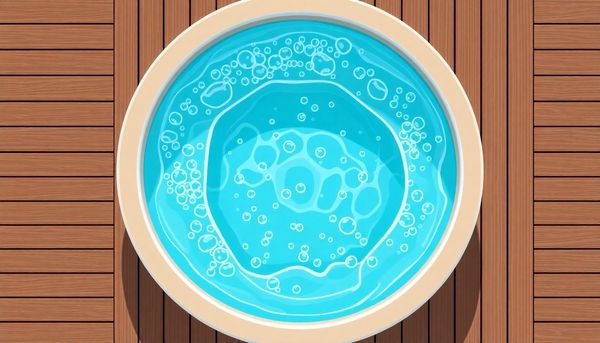
When your hot tub water turns as murky as a foggy morning, it's time to act swiftly. Cloudy water isn't just an eyesore; it signals an imbalance in your tub's ecosystem. The root causes might be numerous, ranging from residual oils and lotions to an overload of bathers. Addressing this swiftly with the correct type of shock can transform your hot tub from a swampy mess back to a crystal-clear oasis.
First, determine the right shock for the job. Chlorine shock is your trusty sidekick when you're facing stubborn cloudiness due to high bather loads or persistent contaminants. It acts aggressively, breaking down organic matter and freeing up combined chlorine. On the other hand, non-chlorine shock is perfect for regular maintenance, especially if you dip into your tub frequently. It helps revitalize your sanitizer without the prolonged downtime.
For immediate clarity, ensure your pH and alkalinity levels are within their optimal range, typically a pH of 7.4 to 7.6 and alkalinity between 100 and 150 PPM. With the correct shock in hand, add the precise amount recommended for your tub's size, keeping the water circulating but not agitated. Let it breathe uncovered, allowing the chemical magic to work.
Regular shocking, combined with balanced water chemistry, is your best defense against recurring cloudiness. Be vigilant, and you'll enjoy sparkling, inviting water every time you take a soak.
Ever watched a magician perform a disappearing act? That's precisely what shock treatment does for your hot tub water—it makes the murky vanish, leaving the pristine behind. Adding shock to your hot tub isn't just about keeping it clear; it's about ensuring every soak is as refreshing as the last. Whether you’re a daily soaker or an occasional dipper, your hot tub's clarity hinges on regular shock treatments.
Imagine hosting a backyard gathering. Your hot tub, a beacon of relaxation, awaits guests. But frequent use can turn crystal waters cloudy, and that's where shock treatment swoops in like a superhero. Chlorine shock is your go-to when facing stubborn bacteria and algae, while non-chlorine shock excels in weekly maintenance and post-soak rejuvenation. Each type has its time and place, ensuring your hot tub's chemistry stays balanced and inviting.
Personal experience has taught me the importance of this practice. On one occasion, neglecting shock led to a hot tub that smelled more like a pool party gone wrong. A quick application of non-chlorine shock, followed by a little patience, transformed it back into a serene oasis. Remember, the key to a delightful soak lies in the details—keeping your sanitizer active and your water clear with regular shock treatments is non-negotiable. That way, your hot tub remains ever-ready for relaxation, free from unwelcome surprises.
Choosing the right shock type for your hot tub can feel like navigating a maze, but understanding a few simple rules can make all the difference. Start by assessing how frequently you use your hot tub and the typical bather load. If your spa is a hub of activity, chlorine shock might be your best ally. This powerful option not only tackles bacteria and algae but also clears up cloudy water after a busy weekend of hosting friends. It’s like giving your tub a fresh start, though you’ll need to wait a bit before jumping back in, as chlorine levels need time to stabilize.
On the other hand, if your hot tub serves as a quiet retreat with occasional use, non-chlorine shock could be your go-to. This option is gentler and allows for quick reentry, often within 20 minutes. It works by rejuvenating existing sanitizers, such as chlorine or bromine, without adding to the chemical load. For regular maintenance, dosing with non-chlorine shock once a week—or after each soak if you indulge frequently—keeps your water sparkling and inviting.
Remember, it’s not just about choosing between chlorine and non-chlorine; it’s about fitting the shock type to your lifestyle. Whether you’re managing a mineral system or a saltwater spa, understanding these nuances ensures your hot tub stays in top condition, offering you clear, clean water whenever you need a soak.
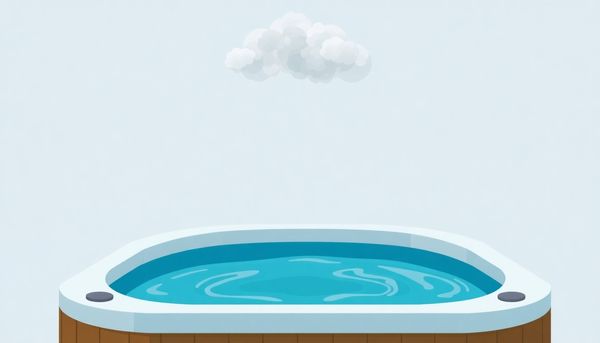
This article provided insights into maintaining your pool. Start your pool care journey today!
Want to become a pool maintenance expert? Our free Pool School course covers everything you need to know about pool care. From basic maintenance to advanced troubleshooting, you'll learn how to:
Join over 10,000 pool owners who have already transformed their pool care routine. Get started with our free Pool School course today!